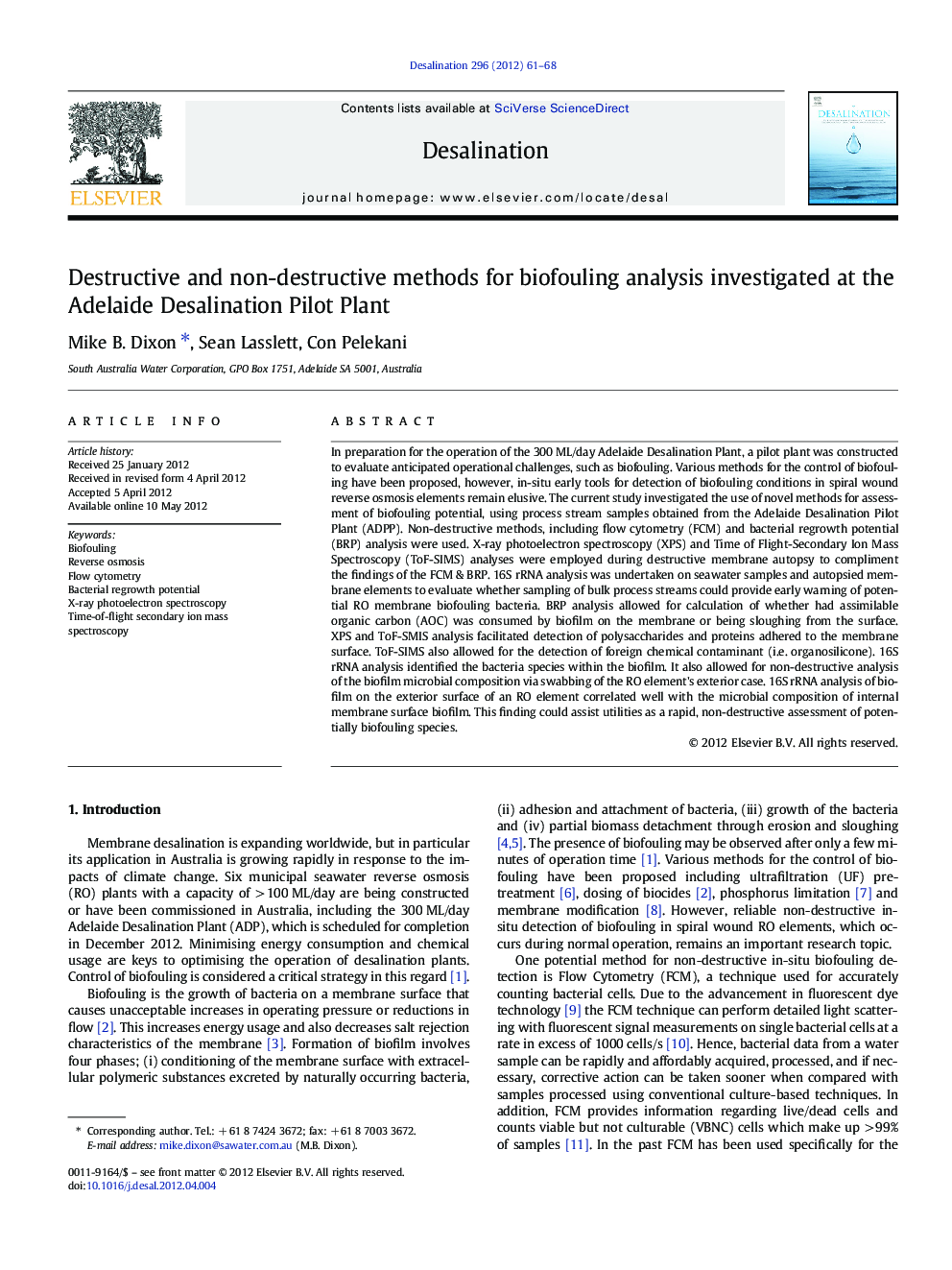| کد مقاله | کد نشریه | سال انتشار | مقاله انگلیسی | نسخه تمام متن |
|---|---|---|---|---|
| 624333 | 1455395 | 2012 | 8 صفحه PDF | دانلود رایگان |

In preparation for the operation of the 300 ML/day Adelaide Desalination Plant, a pilot plant was constructed to evaluate anticipated operational challenges, such as biofouling. Various methods for the control of biofouling have been proposed, however, in-situ early tools for detection of biofouling conditions in spiral wound reverse osmosis elements remain elusive. The current study investigated the use of novel methods for assessment of biofouling potential, using process stream samples obtained from the Adelaide Desalination Pilot Plant (ADPP). Non-destructive methods, including flow cytometry (FCM) and bacterial regrowth potential (BRP) analysis were used. X-ray photoelectron spectroscopy (XPS) and Time of Flight-Secondary Ion Mass Spectroscopy (ToF-SIMS) analyses were employed during destructive membrane autopsy to compliment the findings of the FCM & BRP. 16S rRNA analysis was undertaken on seawater samples and autopsied membrane elements to evaluate whether sampling of bulk process streams could provide early warning of potential RO membrane biofouling bacteria. BRP analysis allowed for calculation of whether had assimilable organic carbon (AOC) was consumed by biofilm on the membrane or being sloughing from the surface. XPS and ToF-SMIS analysis facilitated detection of polysaccharides and proteins adhered to the membrane surface. ToF-SIMS also allowed for the detection of foreign chemical contaminant (i.e. organosilicone). 16S rRNA analysis identified the bacteria species within the biofilm. It also allowed for non-destructive analysis of the biofilm microbial composition via swabbing of the RO element's exterior case. 16S rRNA analysis of biofilm on the exterior surface of an RO element correlated well with the microbial composition of internal membrane surface biofilm. This finding could assist utilities as a rapid, non-destructive assessment of potentially biofouling species.
► FCM can determine when the RO system is sloughing or producing bacteria.
► FCM confirmed bacterial contamination of the antiscalant solution.
► XPS has the potential to detect polysaccharides and proteins adhered to the membrane surface.
► ToF-SIMS indicated the presence of organosilicone fouling.
► 16S RNA identified bacteria species and biofilm composition via swabbing of the RO.
Journal: Desalination - Volume 296, 15 June 2012, Pages 61–68